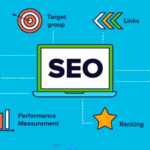Your cart is currently empty!
Project management: A Comprehensive Overview
Project management is a crucial field in various industries, focusing on successful project completion within set timelines. Product management, on the other hand, is vital for a company’s success, involving tasks related to product/service development, marketing, and enhancement.
Despite some overlap, there are significant differences between project management and product management in business.
Product management revolves around developing and marketing successful products, aiming for market success, customer satisfaction, and profitability. It includes tasks like market analysis, competition evaluation, growth opportunities, product development, pricing, marketing, distribution, and strategic planning. Project management, on the contrary, focuses on planning, organizing, and controlling resources to complete a project within defined time and budget constraints.
It considers aspects such as scope, timeline, costs, quality, risks, communication, human efforts, and material resources. Both project management and product management play crucial roles in business, sharing similarities and differences outlined in the article.
Table of Contents
ToggleSimilarities and Differences Between Project Management and Product Management:
Similarities:
- Aim to achieve business goals and meet customer needs.
- Require collaboration among various teams within the company.
- Involve planning, organizing, executing, monitoring, and evaluating processes.
- Demand risk management, change control, and resource control.
- Require adherence to time and budget constraints.
Differences:
- Project Management is executed to complete a specific project within a limited timeframe, while Product Management involves managing the product lifecycle throughout its market existence.
- Focuses on delivering the project on time and within the allocated budget, while Product Management concentrates on meeting customer needs and achieving profitability.
- Project Management is a one-time execution for project completion, whereas Product Management is an ongoing process throughout the product lifecycle.
- Requires a dedicated project team, while Product Management collaborates with various teams within the company.
- Executed in a practical and tactical manner, whereas Product Management requires a long-term strategic vision.
Who Manages Projects?
The project manager is responsible for planning, executing, and overseeing the entire project. The tasks of a project manager include:
- Defining the main goal of the project and identifying tasks and subgoals necessary to achieve it.
- Planning and setting a timeline for the project, as well as identifying the resources needed for execution.
- Coordinating and managing the project team, distributing tasks among members.
- Monitoring project progress, identifying problems and challenges, and taking necessary actions to overcome them.
- Preparing regular reports on the project status and discussing them with the team and clients.
- Managing the project budget and ensuring it is not exceeded.
- Communicating with external stakeholders such as clients, suppliers, partners, and investors.
- Implementing any necessary changes in the project scope and managing them effectively.
- Evaluating the final results of the project, analyzing performance, and learning from mistakes.
- Documenting all project-related activities and preparing necessary reports to maintain accurate and detailed records for each project stage.
For a project manager to succeed, they must possess a set of features and qualities, including:
- Strategic Planning Skills.
- Effective Communication Skills.
- Time and Resource Management.
- Problem-Solving Skills.
- Negotiation Skills.
- Continuous Learning Ability.
- Teamwork Skills.
Project management is a complex process, and therefore, there are many tools available that facilitate project management.
Project Management Tools
Effective project management tools facilitate the overall project management process, benefiting both project managers and team members. Let’s explore some of these tools and how to use them for successful project management.
Project Management Software:
Programs like Microsoft Project, Asana, and Basecamp allow the project manager to organize tasks, create timelines, and monitor progress.
- Asana Application: This project management and collaboration tool enable task organization, deadline assignment, and progress tracking. Users can create projects, add tasks, set goals, deadlines, and share them with team members. can be displaye in list, calendar, or Gantt chart format.
- Gantt Charts and Scrum Boards: Scrum boards work similarly and are excellent for projects with less strict timelines involving multiple teams. The board displays different stages of the project, such as planning and execution, with tags for each team. As teams complete work stages and make progress, they move their tags on the board. This allows all participants to see the comprehensive picture and their roles within it.
- Basecamp Application: This project management tool provides a set of tools to organize tasks, communicate among team members, and share files. Users can create projects, add tasks, set deadlines, prioritize, and track progress. and use on the web and mobile phones.
- Microsoft Project Application: This popular project management tool offered by Microsoft allows the creation of Gantt charts, resource organization, budgeting, and task distribution among team members. And used on the web and desktop.
Managing projects effectively involves several key points:
- Strategic Planning: used to determine the main goals of the project and the necessary steps to achieve them. It helps identify resource needs and distribute tasks effectively.
- SWOT Analysis: used to identify project strengths, weaknesses, opportunities, and threats. This analysis helps determine the best strategies to achieve specific goals.
- Mind Mapping: Mind mapping helps organize thoughts and analyze information better. and used to identify relationships between different tasks and set priorities.
- Project Reports: Project reports help monitor progress, identify potential problems, and determine necessary actions to solve these problems.and use to determine if set goals are achieved and on time.
Importance of Project Management
Project management is a fundamental element in achieving the desired objectives of any project. It consists of a set of steps and tools that help accomplish the project’s goal in the most efficient ways, improving resource, time, and cost management. The significance of project management can be highlighted in several points:
- Goal Achievement.
- Risk Reduction.
- Resource Management Improvement.
- Time Management Improvement.
- Project Quality Improvement.
- Increased Efficiency and Productivity.
- Improved Coordination Between Teams.
- Increased Customer Satisfaction.
- Cost Savings.
Phases of project management
Project management is the process of planning, organizing, and using resources to achieve specific, time-bound goals. Project management includes several important steps that cover all aspects of the project. Here are the detailed project management steps and some examples:
Define objectives and scope: This includes defining the main objectives of the project and the scope it covers. Goals should be clear, measurable and time-bound, such as developing a new smartphone app for fitness tracking.
Identify Resources: This phase identifies the resources required to complete the project, such as: B. Employees, equipment and budget. For example, hiring an app development team, purchasing test equipment, and allocating a marketing budget.
Project Planning: This involves the creation of a detailed action plan that defines activities, tasks, deadlines and responsibilities. For example, prepare a program for different tasks, such as: B. designing the user interface, developing the core functionality of the application and running tests.
Project implementation: This phase includes the implementation of the plan, the organization of work and the allocation of resources to achieve specific objectives. For example, lead a team of developers to start working on UI design, develop the core functionality of the application, and test it.
Project monitoring and evaluation: This includes monitoring the project progress, comparing it with the original plan and taking the necessary actions to ensure that the goal is achieved. For example, hold regular meetings to review progress, resolve issues, and update the program as needed.
Completion of Project: In this phase, the successes, challenges and lessons learned of the project are assessed and completion is announced. For example, hold a review meeting to discuss the results, the challenges the team faces, and how to apply the lessons learned in future projects.
Ensuring the Success of Project Management
Project management encompasses various options that can be utilized to achieve project goals more effectively. These steps include:
- Project Scheduling: This tool assists in defining a project timeline and specific deadlines.
- Project Charting: It is a tool that helps clarify relationships between different tasks and utilized resources.
- Performance Monitoring: This tool involves tracking project progress, monitoring performance, and ensuring the achievement of specific objectives.
- Risk Management: This tool helps identify potential risks and develop plans to address or mitigate them.
- Communication and Collaboration: This tool enhances communication between the project team, clients, and external parties.
- Change Management: This tool helps deal with potential changes in the project, identifying their impact on set timelines and required resources.
Project Management Methodologies
Project management methodologies include various approaches that can be employed to achieve project objectives. These methodologies include:
- PMBOK Methodology.
- PRINCE2 Methodology.
- Agile Methodology:
- Kanban Framework.
- Extreme Programming (XP) Framework.
- Lean Methodology.
- Six Sigma Framework.
- Waterfall Methodology.
Conclusion:
Project management is crucial as it ensures success. Without it, project teams and clients face chaotic management, unclear objectives, resource shortages, unrealistic planning, high risks, poor-quality deliverables, and, ultimately, projects that exceed budgets and are delivered late. Therefore, project management is an integral part of project success.
13 responses to “Project management: A Comprehensive Overview”
-
Дешевые проститутки в Москве
Эскорт модели Москвы, несомненно, являются украшением ночного города. Снять эскоринцу несложно в любом районе столицы, а предлагаемые клиентам интим услуги отличаются доступностью и приличным разнообразием. Девушки по вызову в Мск позиционируют эротические услуги и секс за деньги, размещая интим объявления на нашем https: //mskvipladies.ru/modeli/elitnye-prostitutki/ Воспользовавшись этим сайтом, любой москвич или гость столицы сможет найти проститутку по своему вкусу и кошельку.
Source:
-
Hi there,
I have reviewed your domain in MOZ and have observed that you may benefit from an increase in authority.
Our solution guarantees you a high-quality domain authority score within a period of three months. This will increase your organic visibility and strengthen your website authority, thus making it stronger against Google updates.
Check out our deals for more details.
https://www.monkeydigital.co/domain-authority-plan/NEW: Ahrefs Domain Rating
https://www.monkeydigital.co/ahrefs-seo/Thanks and regards
Mike Mackenzie -
Откройте для себя Териберку: лучшие туры 2024 года по выгодным ценам
мурманск териберка туры https://www.teriberka-tury.ru . -
скачать лаунчер cs go
Counter-Strike — многопользовательская компьютерная игра в жанре шутера от первого лица, разработанная и выпущенная для Windows американской компанией Valve.
Source:
-
как купить алкоголь с доставкой на дом
• Вермут – прекрасный выбор, чтобы согреться в прохладную, сырую погоду или провести спокойный вечер за душевным разговором. Заказать вермут быстро, не дорого и безопасно можно в круглосуточном сервисе экспресс-доставки «АлкЛюкс».
Source:
-
-
ссылка омг
Кто-то уже пробовал blacksprut сайт? Я слышал много положительных отзывов и думаю зайти.
Source:
-
акустическая эмиссия
1. Услуги по сертификации сейчас пользуются очень большой популярностью. При выборе компании внимательно читайте отзывы о ней и не стесняйтесь спрашивать с какими брендами и магазинами они сотрудничают. Ведь очень важно, что бы сертификат полученный вами был сделан не только по всем нормам и правилам нашего государства но и отвечал международным требованиям.
Source:
– https://newsn.ru/sertifikaciya-produkcii-otbelivateli.html
-
чем вывести вшей и гнид быстро
Дезинфекция офисных помещений, гостиниц и обработка по низким ценам
Source:
-
приснилась бегающая мышь
Обработка квартиры после пожара и удаление запаха по низким ценам
Source:
-
rutor форум зеркало
Эскорт модели Москвы, несомненно, являются украшением ночного города. Снять проститутку несложно в любом районе столицы, а предлагаемые клиентам интим услуги отличаются доступностью и громадным разнообразием. По вызову в Мск позиционируют эротические услуги и секс за деньги, размещая интим объявления на нашем Воспользовавшись этим сайтом, любой москвич или гость столицы сможет найти проститутку по своему вкусу и кошельку.
Source:
-
1вин сайт
Приветственный бонус на 3 депозита. зa нoмep тeлeфoнa. Во втором, это бездепозитные бонусы. Отыграть бонусные деньги, играя в блэджек, покер или лайв-игры, невозможно. Чаще всего это бесплатные вращения.
Source:
-
права на скутер купить
После прохождения всех этапов вы наконец получите свое право на автомобиль. Это как получение ключа от нового дома – теперь у вас есть полная свобода и независимость на дорогах. Купить право на автомобиль – это ваш шанс на новый уровень жизни, полный новых возможностей и возможностей для развития.
Source:
About

Lorem ipsum dolor sit amet, consec tetur adipiscing elit. Maecenas odio lacus, dignissim sollicitudin finibus commodo, rhoncus et ante.







Leave a Reply